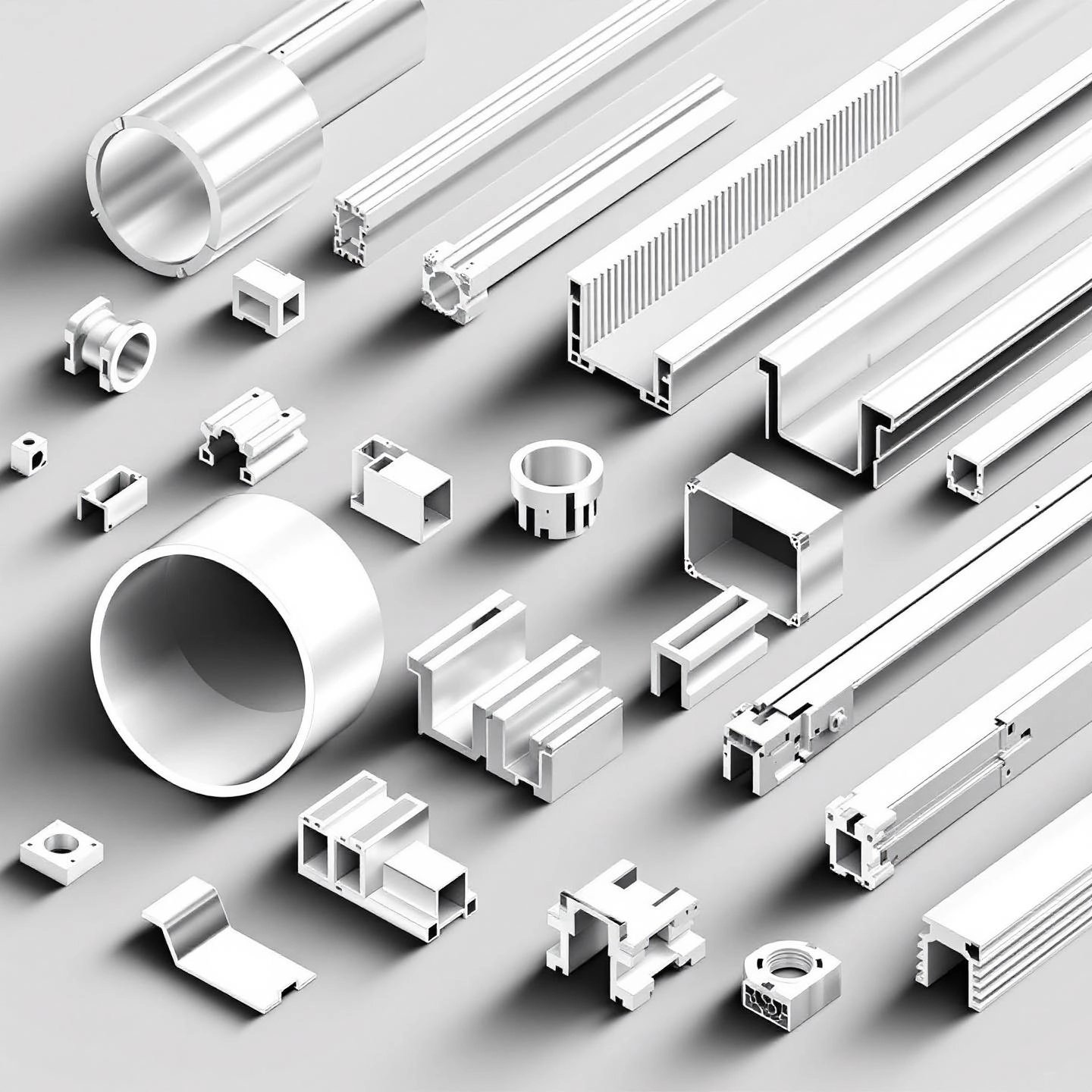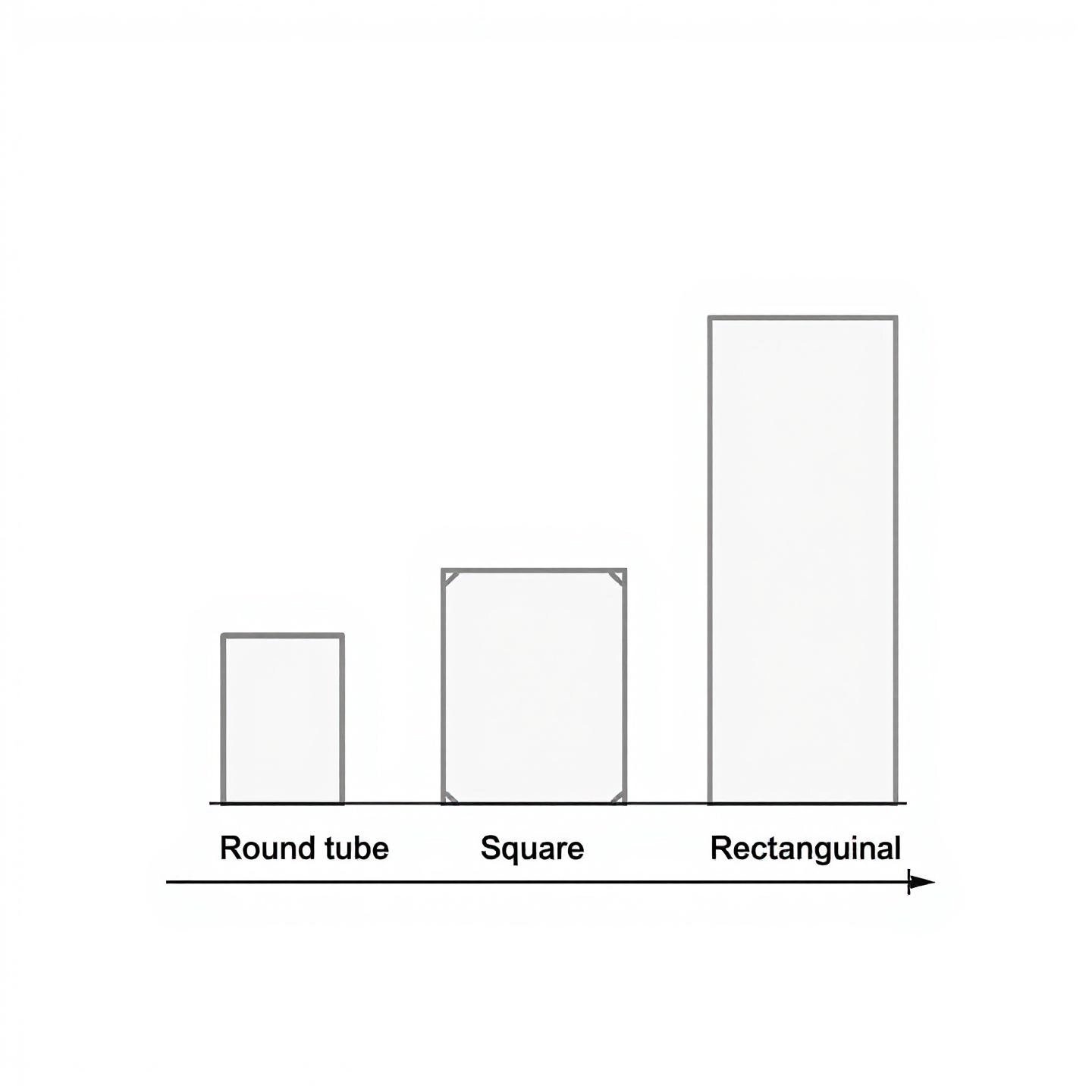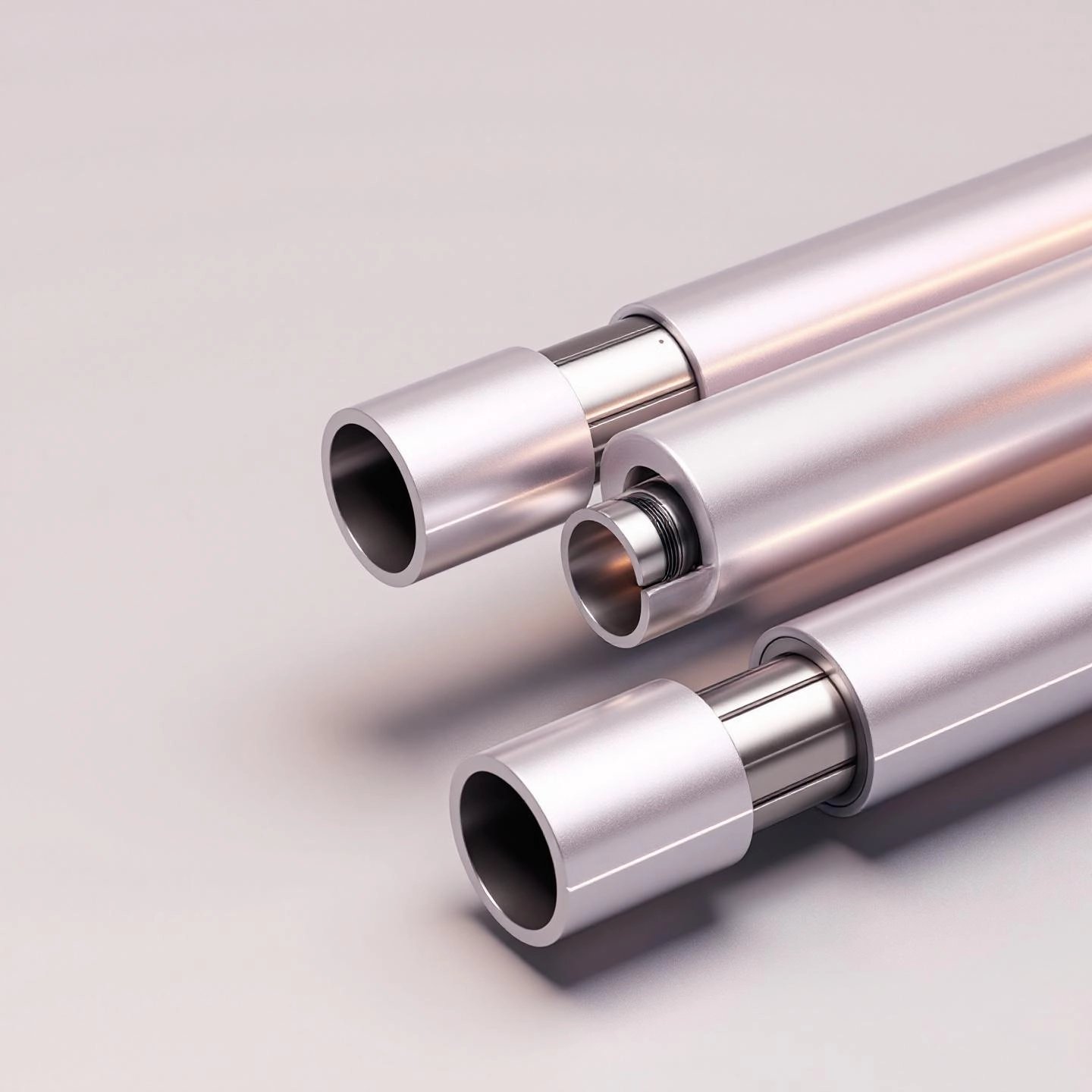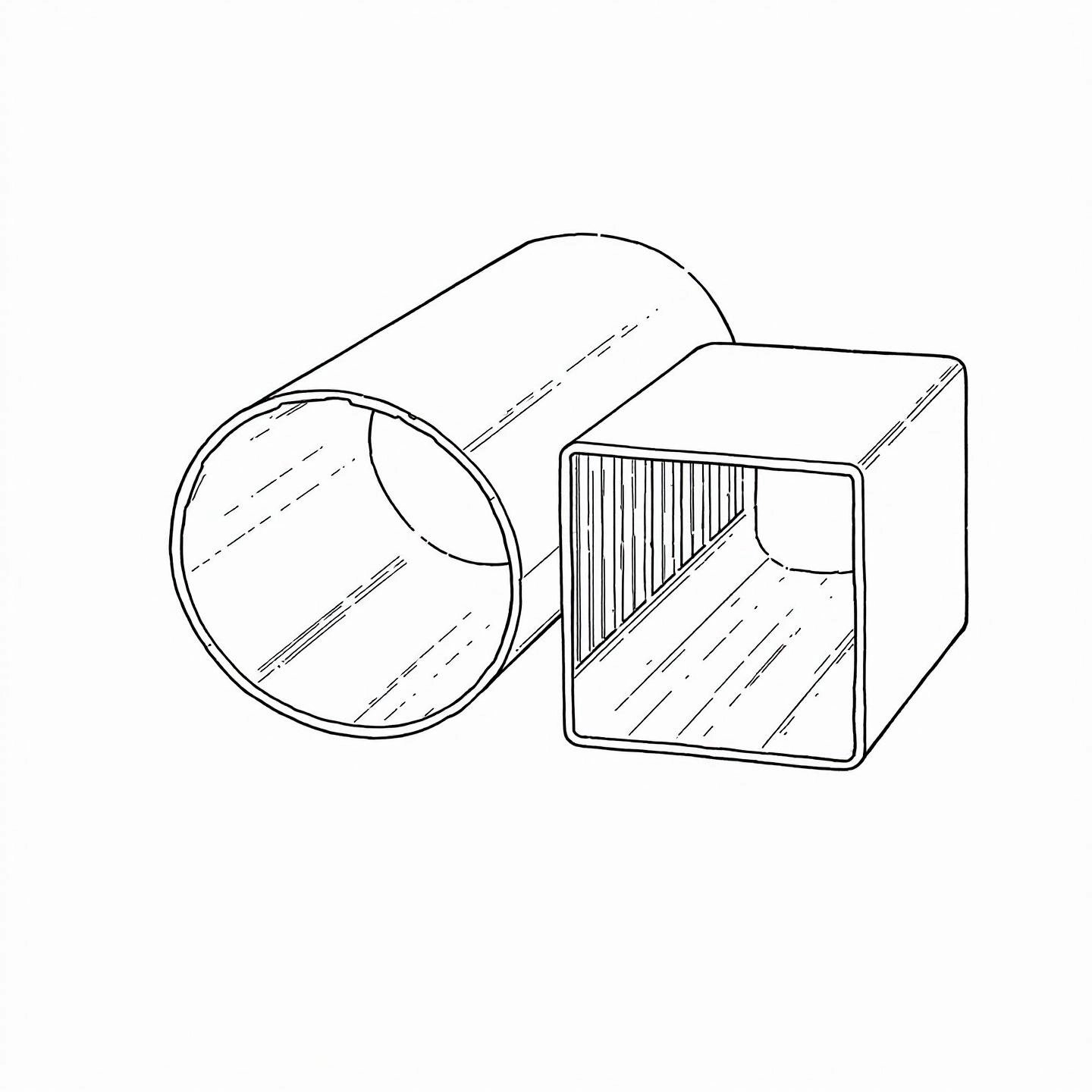
Ever wondered why aluminum tubing is everywhere—from the frame of your mountain bike to the supports in modern buildings? When you walk through a construction site, fly on a plane, or even enjoy a backyard barbecue, chances are you’re surrounded by products made from aluminum tube. But what exactly is it, and why has it become such a staple across so many industries?
At its core, aluminum tubing is a hollow, extruded product formed by forcing aluminum alloys through a specialized die. This process creates tubes in a variety of shapes and sizes, tailored to meet the needs of everything from high-rise construction to intricate hobby projects. The versatility of aluminum means these tubes can be round, square, rectangular, or even custom-shaped to match unique design requirements.
Why do engineers, builders, and DIYers alike love aluminum tubing? Consider these key advantages:
But it doesn’t stop there. Aluminum tube is also flexible, easy to fabricate, and available in a range of finishes to match both functional and aesthetic needs. Whether you’re building a greenhouse, assembling a custom bike, or designing industrial frameworks, choosing the right aluminum tubing can make all the difference.
This guide is here to help you navigate the world of aluminum tubing. We’ll walk you through selecting the right profile, understanding standard sizes, sourcing reliable suppliers, and using aluminum tubes effectively for your unique project. Ready to get started? Let’s dive in and explore why aluminum tubing is the ultimate material for any project.

When you’re planning a project—whether it’s a sturdy greenhouse frame, a sleek railing, or a custom machine build—you’ll quickly discover that not all aluminum tubing is the same. The secret lies in the “profile.” But what exactly does that mean, and how do you decide between round, square, or rectangular tubes?
Sounds complex? Let’s break it down. In the world of aluminum extrusion, a profile refers to the specific cross-sectional shape formed when heated aluminum is forced through a precision die. This process produces consistent, hollow or solid shapes—like tubes, channels, or beams—tailored for both strength and function. The profile you choose will determine not just the look of your project, but also its structural integrity and suitability for specific tasks.
Among the countless shapes available, three profiles stand out for their versatility and widespread use:
Here’s a quick way to match your project to the ideal aluminum tubing shape:
| Profile | Best For | Key Strengths | Common Examples |
|---|---|---|---|
| Aluminum Round Tubing | Fluid flow, bending, strength in all directions | Even stress distribution, easy to bend | Bicycle frames, railings, flagpoles |
| Aluminum Square Tubing | Frameworks, modular assembly, easy joining | Stable, easy to cut and weld | Furniture, machine frames, shelving |
| Aluminum Rectangular Tubing | Spanning distances, tight spaces | Wide mounting surface, slim profile | Door/window frames, support beams |
Still unsure? Ask yourself: Does your project need to handle twisting or bending? Go round. Need straight, modular assembly? Square is your friend. Looking for a slim, supportive span? Rectangular might be the answer.
Remember, the profile you select affects not only the strength and durability of your build but also how easy it will be to fabricate, assemble, and finish. As you move forward, understanding these shapes will help you choose the right aluminum tubing for any application. Next, we’ll take a closer look at how these profiles are sized and what dimensions really matter when specifying your tubing.
Ever tried to order aluminum tubing and felt lost in a sea of numbers—OD, ID, wall thickness? You’re not alone. Getting the right size is crucial, whether you’re building a custom rack, a greenhouse frame, or a prototype for a new product. Let’s break down the basics so you can confidently specify exactly what you need.
When it comes to aluminum tubing, three measurements matter most:
Imagine you’re looking at 1 inch aluminum tubing. If the wall thickness is 0.065 inches, the ID will be 1.000 - (2 × 0.065) = 0.870 inches. The same principle applies to any size—just adjust the numbers!
Unlike pipe (which is measured by its nominal inside diameter), aluminum tube is always specified by its outside diameter and wall thickness. That’s why a 3/4 inch aluminum tubing actually has an OD of 0.75 inches, and the ID depends on the wall thickness you choose.
To help you visualize what’s available, here’s a table of standard round aluminum tubing sizes, including popular options like 1 inch and 3/4 inch:
| OD (inches) | Wall Thickness (inches) | ID (inches) | Approx. Weight (lb/ft) |
|---|---|---|---|
| 3/4 | 0.035 | 0.680 | 0.091 |
| 3/4 | 0.049 | 0.652 | 0.125 |
| 3/4 | 0.065 | 0.620 | 0.160 |
| 1 | 0.035 | 0.930 | 0.123 |
| 1 | 0.049 | 0.902 | 0.170 |
| 1 | 0.065 | 0.870 | 0.220 |
| 1 1/4 | 0.035 | 1.180 | 0.155 |
| 1 1/2 | 0.049 | 1.40 | 0.260 |
These are just a few of the most common sizes, but aluminum tubing is available in a wide range of diameters and wall thicknesses to suit almost any application. If you need something larger, smaller, or with a unique profile, custom options are often available from specialty suppliers.
Getting these measurements right will save you time and frustration—and ensure your aluminum tubing performs just as you expect. Next up, we’ll walk through how to select the best square tubing for your specific application, including load considerations and alloy choices.
When you’re planning a new build—maybe a heavy-duty workbench, a modular display rack, or a custom machine frame—choosing the right aluminum tubing can seem overwhelming. Square profiles are popular for their clean lines and easy assembly, but how do you know which type fits your needs best? Let’s break down the key factors so you can confidently pick the right 2x2 aluminum square tubing, 1 inch square aluminum tubing, or any size in between.
Not all projects demand the same strength. Imagine you’re building an industrial cart versus a lightweight shelving unit—the tubing you choose must safely support the weight involved. Here’s how to match your tubing to your application:
Tip: Always factor in dynamic forces—such as vibration, movement, or impact—when calculating your load requirements.
Where will your aluminum tubing be used? Outdoor structures, marine applications, and high-humidity settings demand extra attention:
Imagine a greenhouse frame exposed to rain and sun year-round—anodized 6063-T5 square tubing would provide long-lasting performance and minimal maintenance.
Alloys matter. Two of the most common choices are:
| Alloy | Strength | Corrosion Resistance | Best For |
|---|---|---|---|
| 6061-T6 | High | Excellent | Structural, load-bearing, industrial frames |
| 6063-T5 | Moderate | Superior | Architectural, decorative, anodized finishes |
If strength is your top concern (like for machine bases or vehicle frames), 6061-T6 is the go-to. For projects where appearance and corrosion resistance are key—such as window frames or display systems—6063-T5 is often preferred.
Finishing isn’t just about looks—it boosts durability, too. Common finishes for square tubing include:
Imagine you want a sleek black frame for a retail display—powder-coated or anodized square tubing offers both style and protection.
Sometimes, off-the-shelf tubing just won’t cut it. Maybe you need a unique profile, extra-long lengths, or specialized machining. In these cases, partnering with an experienced manufacturer is essential. For example, large-scale projects or custom designs often benefit from the expertise and production capacity of established suppliers like Shengxin Aluminum, who can deliver tailored solutions for demanding requirements.
"Selecting the right square aluminum tubing involves balancing strength, environment, finish, and alloy—while keeping your project’s unique needs front and center."
With your square tubing selected, you’re ready to explore even more specialized options—like telescoping tube systems that offer flexibility and adaptability for dynamic projects.

Have you ever used an adjustable pole that extends effortlessly, or a tripod that collapses neatly for storage? If so, you’ve experienced the practical magic of telescoping aluminum tubing. But what exactly makes these tube systems so adaptable—and why are they a favorite for countless engineering, hobby, and commercial projects?
Picture a set of tubes, each with a slightly smaller diameter than the last, designed to slide smoothly inside one another. This is the essence of telescoping tubing—multiple nested tubes that can extend or retract as needed. By pulling or pushing the assembly, you can easily adjust the overall length, creating a structure that adapts to your requirements on the fly. Sounds simple, right? But achieving that smooth slide and reliable strength takes smart design and precise manufacturing.
When you’re working with telescoping aluminum tubing, every fraction of a millimeter matters. Why? Because for tubes to slide easily—without wobbling or jamming—they must be manufactured to exacting tolerances. Imagine trying to fit two puzzle pieces together: too tight, and they won’t move; too loose, and the assembly feels unstable.
Some manufacturers even offer custom lengths, wall thicknesses, and accessories like locking button inserts or end caps to further enhance usability.
Where might you encounter telescoping tube systems in daily life or industry? Here are some of the most popular uses:
What ties all these applications together? The need for a structure that’s both lightweight and strong, easy to adjust, and resistant to the wear and tear of repeated use. That’s where telescoping aluminum tubing stands out—delivering flexibility without compromising on performance or durability.
Ready to bring dynamic movement to your next project? Understanding telescoping tube systems opens up a world of creative, space-saving solutions. Next, let’s tackle another practical challenge: how to bend aluminum tubing cleanly and safely for custom shapes and designs.
Ever tried bending aluminum tubing for a custom project, only to end up with a kinked, wrinkled, or even cracked tube? If so, you’re not alone. Shaping aluminum tubes into smooth curves or precise angles is a common need in everything from bike frames to furniture, but it’s also a process that can go wrong quickly without the right know-how. So, how do you bend aluminum tubing cleanly and safely? Let’s break down the essentials, step by step.
Aluminum is prized for being lightweight and relatively easy to work with, but it’s also more prone to cracking or kinking than steel, especially when bent too sharply or with the wrong technique. The alloy, wall thickness, and bend radius all play a role in how the tube behaves under stress. Imagine trying to bend a soda can without crushing it—that’s the challenge on a larger scale!
Depending on your project and available tools, you have several proven options for how to bend aluminum tubing successfully:
Wondering which alloys to choose for a smooth bend? Here’s a quick guide:
| Alloy | Bendability | Common Uses |
|---|---|---|
| 3003 | Excellent | General fabrication, gutters, roofing |
| 5052 | Very Good | Marine, automotive, electronics |
| 6061-T6 | Fair (anneal for best results) | Structural, frames, machinery |
| 6063-T5 | Good | Architectural, decorative, extrusions |
Still not sure? Ask yourself: Is appearance critical, or is strength the top priority? For visible, complex bends, stick with alloys known for flexibility. For structural strength, 6061-T6 works—but may require heat treatment or special care.
"The secret to successful aluminum tube bending is matching the right method and alloy to your project’s needs, and never rushing the process."
With these techniques and tips, you’ll be ready to tackle your next custom curve or angled frame. Up next, let’s explore how to find local suppliers and retailers for aluminum tubing, so you can get the right materials for your next build.
Ever found yourself searching for "aluminum tubing near me" and feeling overwhelmed by the options? Whether you need a single length for a DIY project or bulk quantities for a commercial build, knowing where and how to look can save you time, money, and frustration. Let’s break down the smartest ways to source aluminum tubing locally—and what to expect from each type of supplier.
Imagine you’re in the middle of a project and realize you’re short on material. Where do you start? Here’s a step-by-step approach:
Should you head to a big-box store like Home Depot or seek out a dedicated metal supplier? Consider these points:
| Source | Pros | Cons | Best For |
|---|---|---|---|
| Home Depot / Lowe’s |
|
|
Small repairs, DIY, quick fixes |
| Specialized Suppliers |
|
|
Commercial builds, custom projects, bulk orders |
If you just need a piece or two of aluminum tubing home depot can be a lifesaver. But for specialized alloys, unique profiles, or large quantities, a dedicated supplier is the better choice.
Once you’ve found a few options, reaching out the right way can make all the difference. Here’s what to have ready when you call or email:
Pro tip: If you don’t get a response to your email, try calling directly. Many metal suppliers prioritize phone inquiries and can answer your questions in real time (Cloudy Nights Forum).
With these strategies, you’ll be able to source the right tubing quickly and confidently—whether you’re building a prototype, repairing equipment, or tackling a creative DIY project. Next, we’ll explore how to buy aluminum tubing online for even more selection and convenience.

Ever found yourself scrolling through pages of aluminum tubing for sale and wondering, “How do I know which supplier is right for my project?” With so many options online, it’s easy to feel overwhelmed. But buying aluminum tubing online doesn’t have to be a guessing game. By knowing what to look for and what questions to ask, you can secure the best materials—whether you need a single length for a DIY build or a truckload for industrial production.
Imagine walking into a store with every size, shape, and alloy of tubing you could ever need—plus options for custom cutting and finishing. That’s the advantage of shopping online. Here’s why more builders, engineers, and hobbyists are making the switch:
Not all online suppliers are created equal. Before you place your order, use this checklist to ensure you’re partnering with a reputable source:
| Evaluation Point | What to Look For |
|---|---|
| Product Specifications | Clear details on alloy, temper, OD, wall thickness, length, and finish. Look for downloadable spec sheets or detailed product pages. |
| Pricing Transparency | Upfront pricing, including options for cut-to-length, finishing, and bulk discounts. Beware of hidden fees or unclear shipping costs. |
| Minimum Order Quantities | Some suppliers require a minimum purchase—make sure it fits your project size. For one-off builds, seek out no-minimum or small-pack options. |
| Finishing Services | Options for anodizing, powder coating, or special machining. This can save time and ensure a professional result. |
| Certifications & Quality Assurance | Look for suppliers who provide material certifications (such as ISO 9001) and guarantee traceability or single heat lot sourcing for consistent quality. |
| Customer Support | Responsive service, technical advice, and clear communication channels. Check for live chat, phone support, or detailed FAQs. |
Are you managing a large-scale project, need a unique extrusion, or require strict quality control? This is where established manufacturers like Shengxin Aluminum stand out. With advanced production capabilities, deep-processing workshops, and a track record of delivering to demanding industries, they can streamline procurement for bulk or custom orders. Whether you’re building rail transit parts, architectural facades, or industrial frameworks, partnering with a high-capacity supplier ensures you get consistent, certified, and tailored products—every time.
“The best online aluminum tubing suppliers combine variety, transparency, and expert support—helping you move from selection to installation with total confidence.”
Ready to compare your options? In the next section, we’ll put round and square tubing head-to-head, so you can pick the perfect profile for your next project.

When you’re faced with a choice between aluminum round tubing vs square, it’s easy to get stuck on appearances. But there’s more to the decision than just looks. Each profile brings unique strengths to the table—literally and figuratively. So, how do you know which is best for your build? Let’s break down the differences with clear, real-world examples and a side-by-side comparison.
Imagine building a bike frame, a handrail, or a heavy-duty workbench. The shape of your tubing directly affects how your structure handles stress and load:
| Feature | Round Aluminum Tubing | Square Aluminum Tubing |
|---|---|---|
| Structural Strength | Excellent for torsion, bending, and dynamic loads; distributes stress evenly | Superior rigidity for compression and static loads; strong in frameworks |
| Ease of Connection | More complex to weld or join; best for curved assemblies | Easy to cut, drill, weld, and bolt; ideal for modular builds |
| Aesthetics | Streamlined, classic; good for visible or aerodynamic designs | Modern, clean lines; popular in architectural and furniture applications |
| Fluid Flow | Optimal—smooth flow for liquids and gases | Not ideal—sharp corners impede flow |
| Bending & Shaping | Easy to bend with minimal distortion | Harder to bend; risks kinking or buckling |
| Weight (for same size) | Lighter (about 20% less than square for same length) | Heavier; offers more contact area for connections |
Still on the fence? Think about your project’s priorities: Do you need maximum strength in all directions, or is modular assembly and easy fabrication more important? By matching your needs to the strengths of each profile, you’ll make a confident, informed choice. And if you’re working on a custom or specialized build, consult with your supplier for expert guidance on the best fit for your application.
With a clear understanding of the differences between round and square aluminum tubing, you’re now ready to wrap up your project planning and move forward with the best material for the job. In our final section, we’ll recap the key takeaways and offer guidance for sourcing custom or bulk tubing solutions.
Ever wondered what sets a successful project apart from a frustrating one? Often, it comes down to picking the right materials—and as you’ve discovered, aluminum tubing stands out for its unique blend of strength, lightness, and adaptability. Now that you’ve explored profiles, sizes, alloys, and sourcing strategies, you’re equipped to make informed choices for any application, big or small.
From construction and transportation to furniture and electronics, aluminum tubing’s versatility is unmatched. Its combination of durability, recyclability, and ease of fabrication means it adapts to nearly any project—whether you’re building a prototype, upgrading industrial equipment, or designing sleek architectural features. And with the ability to customize profiles, finishes, and lengths, it’s easy to see why so many turn to custom aluminum tubing for specialized applications.
Imagine tackling a project that demands precise tolerances, unique shapes, or large-scale production. In these scenarios, working with an experienced aluminum tubing supplier is crucial. Established manufacturers like Shengxin Aluminum bring advanced production capabilities, deep industry expertise, and a commitment to quality—helping you achieve reliable, high-performance results every time.
“The right aluminum tubing—matched to your project’s needs—transforms ideas into reality. With the knowledge from this guide, you’re ready to select, source, and use aluminum tubing with total confidence.”
Ready to get started? Whether you’re sourcing off-the-shelf lengths or designing something truly custom, remember that the right partner and a clear understanding of your options are the keys to project success. For specialized or large-scale needs, consider reaching out to a proven manufacturer like Shengxin Aluminum to ensure quality, consistency, and expert support every step of the way.
Aluminum tubing is lighter than steel and offers a high strength-to-weight ratio, making it ideal for projects needing reduced weight. However, steel is generally stronger in terms of tensile and compressive strength. For applications where minimizing weight is crucial, aluminum tubing is often preferred, but for maximum load-bearing strength, steel may be the better choice.
6061-T6 aluminum tubing is known for its higher yield and fatigue strength, making it suitable for structural and load-bearing applications. 6063-T5 offers superior corrosion resistance and is often used for architectural and decorative purposes, especially when a smooth, anodized finish is desired. Your choice should depend on whether strength or appearance is the priority for your project.
Unlike steel, aluminum does not benefit from heating when bending, as heat can compromise its structure and strength. Instead, techniques like mandrel bending, sand packing, or using specialized tube benders are recommended for achieving smooth, kink-free bends in aluminum tubing. For alloys like 6061-T6, annealing (controlled heating and cooling) may be used to improve bendability.
2x2 aluminum square tubing, especially in alloys like 6061-T6, provides excellent structural strength for frames, racks, and supports. Its load-bearing capacity depends on wall thickness and alloy, but it is widely used in industrial and architectural frameworks where rigidity and durability are required.
When purchasing aluminum tubing online, check product specifications for alloy, size, and finish, ensure transparent pricing, and review minimum order requirements. Consider if custom cutting or finishing services are needed. For large or custom orders, partnering with an established manufacturer like Shengxin Aluminum can ensure consistent quality and expert support.
 บริการออนไลน์
บริการออนไลน์ 0086 136 3563 2360
0086 136 3563 2360 sales@sxalu.com
sales@sxalu.com +86 136 3563 2360
+86 136 3563 2360